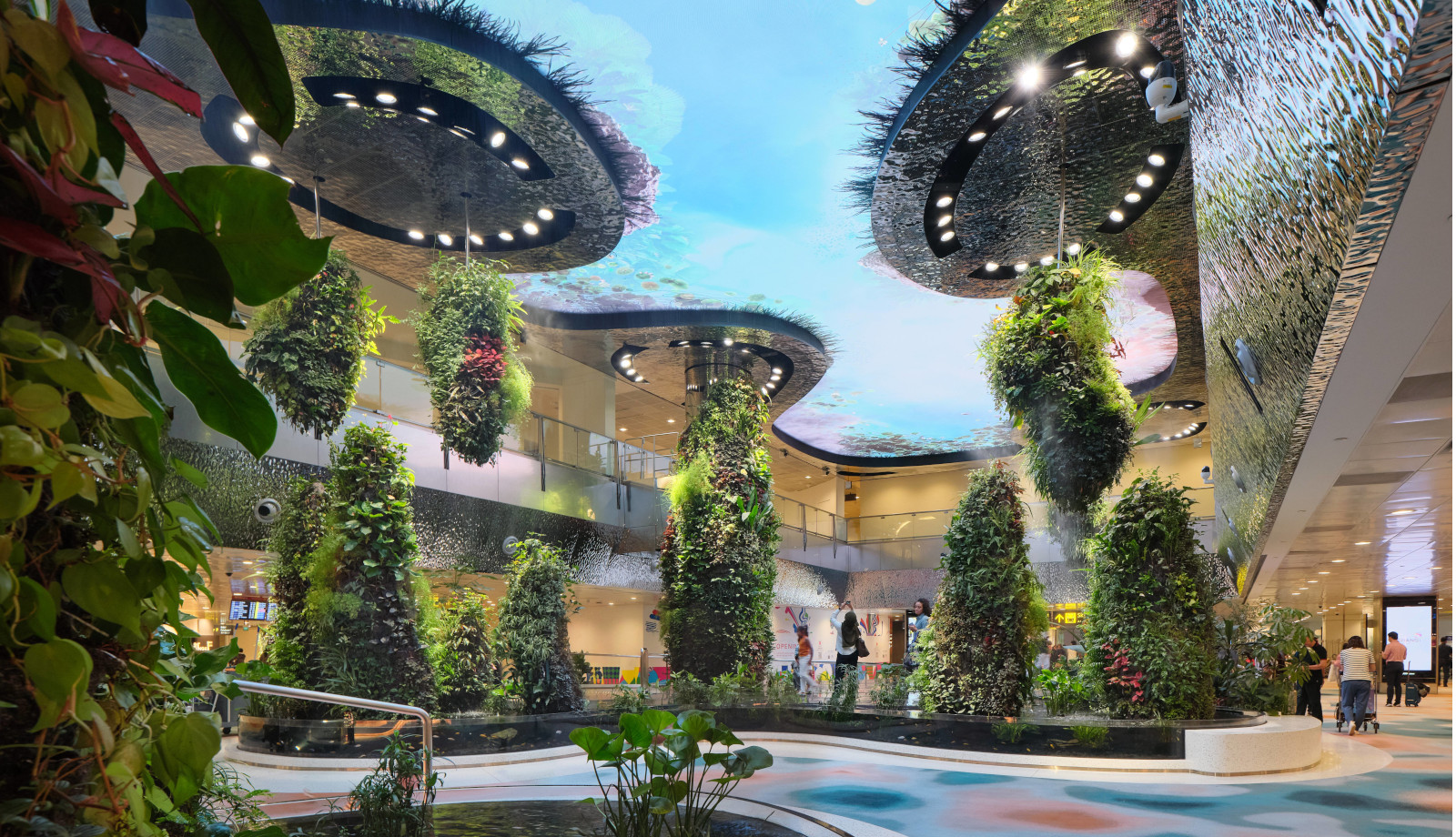
The completion of Terminal 2 at Changi Airport crafts a new architectural language for airport design (and follows the airport’s Jewel hub by Safdie Architects, which opened in 2019). The project was designed by Boiffils Architecture, a family-owned firm founded in 1984, with a rich portfolio of projects throughout Asia. The terminal expansion was approached by drawing on Singapore’s artistic and cultural heritage, inspired by the surrounding flora and natural light to form an open gateway into the Asian Garden City.
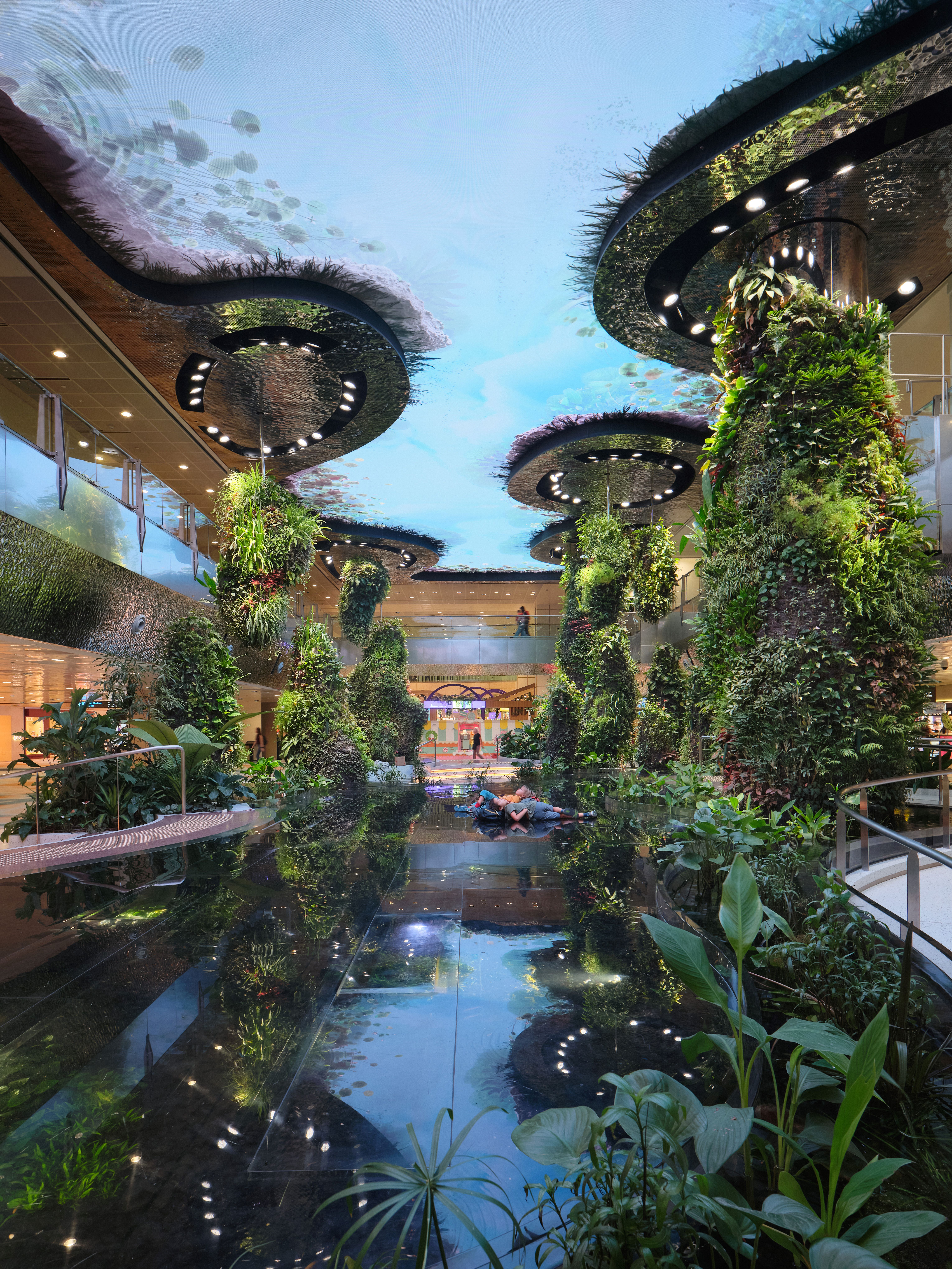
Changi Airport's Terminal 2: an organic traveller experience
Over the course of five years, the expansion project stretched over 120,000 sq m across three levels. Led by Basile Boiffils, a second-generation architect following in the footsteps of its founders, the scheme implements an alternative approach to traditional airport design, with an emphasis on traveller experience, rather than on the management of passenger flow.

'We wanted the architecture to be a source of emotions and a stimulant of senses through its connections with nature,’ says Boiffils. ‘As lovers of nature and gardens, we drew those inspirations from vegetation, topography, geology, minerals, ponds, streams, currents, water reflections, and much more to create spaces and forms that blur the boundaries between architecture and landscape.’
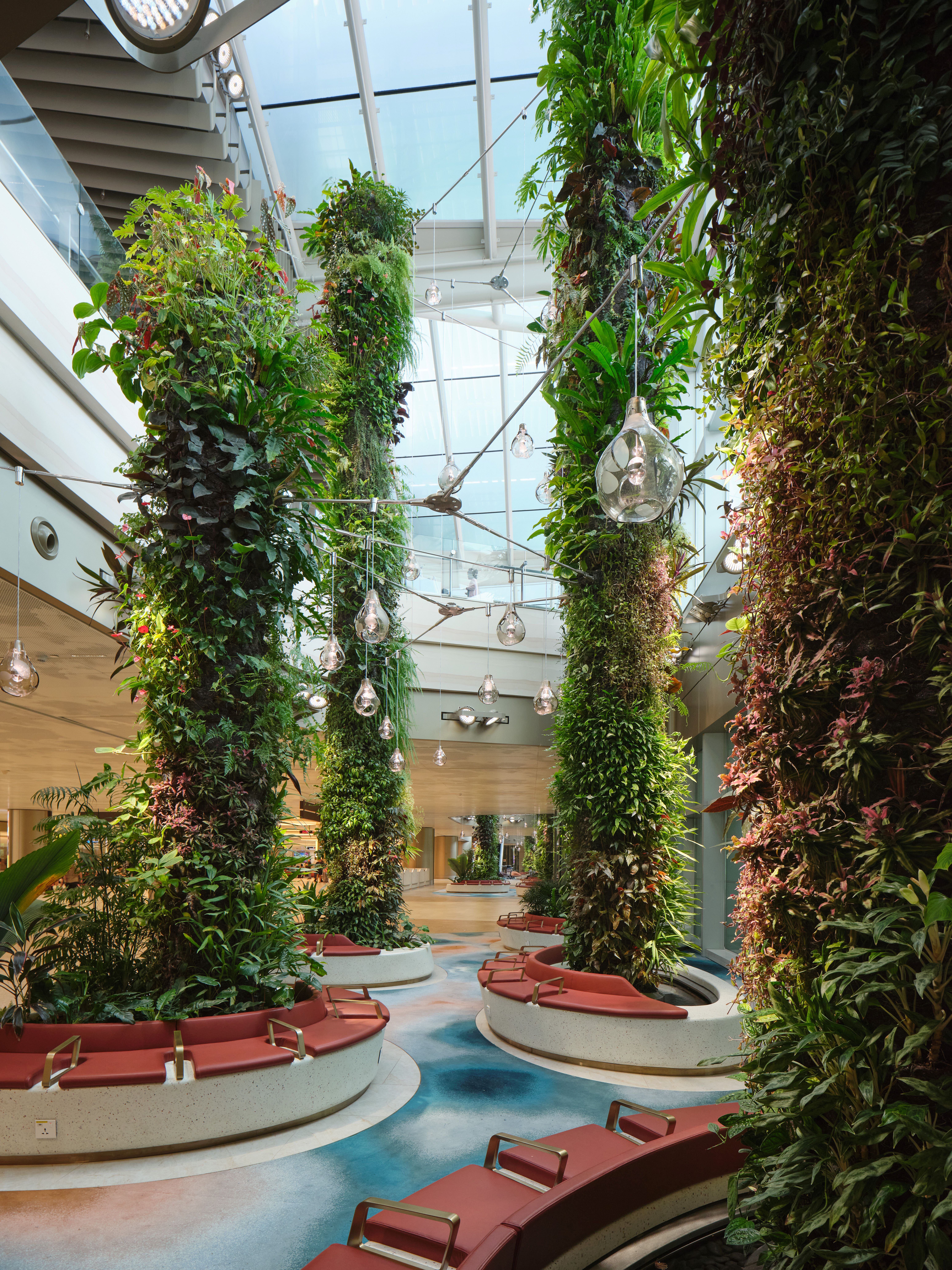
Changi Airport was originally built in the 1990s, and renovated in 2003. When taking on the terminal expansion, Boiffils wanted to reintroduce romanticism into commercial travel, a nod to its heyday during the 1950s and 1960s. The French practice introduced relaxing experiences to soothe tension in what can be a high-stress environment, through a series of visual, audio and interactive stimuli.

Basile explains: ‘Travel in the 21st century is filled with stressful moments – from check-in to security lines, and immigration – and we wanted to provide extensive transparency to enable views of the steps ahead as a way of reducing anxiety derived from the unknown and unfamiliarity with the airport.’
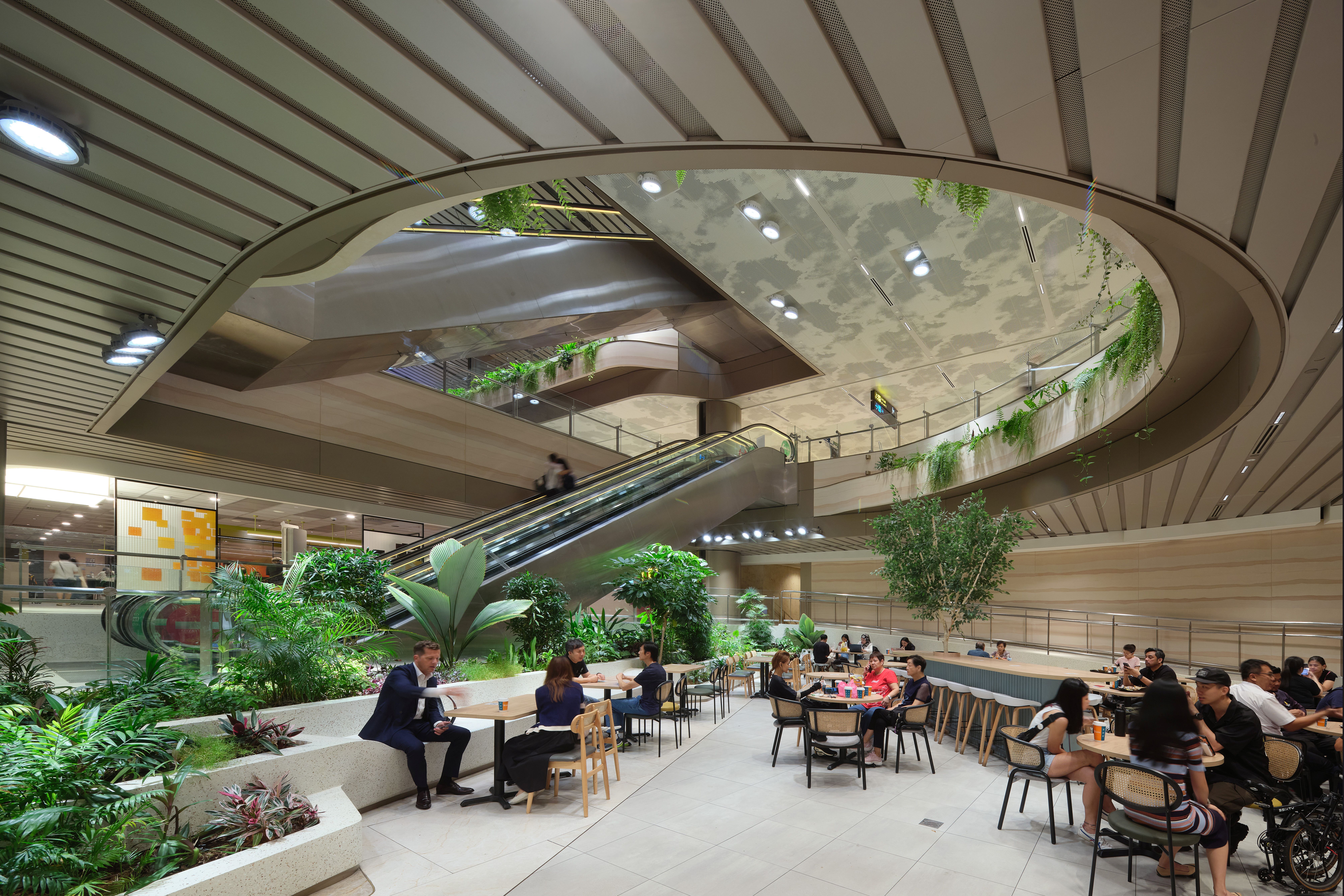
Of course, efficiency isn't compromised within the design. Taking note of the firm's previous work within luxury hotels, boutiques and malls, the space is treated with a mix of elegant earth tones, high-tech elements, and organic materials, enveloped in flora native to Singapore. In contrast to a typical sterile airport feel, the architecture evokes panoramas of land and sea, with linear detailing that mimics geological formations.
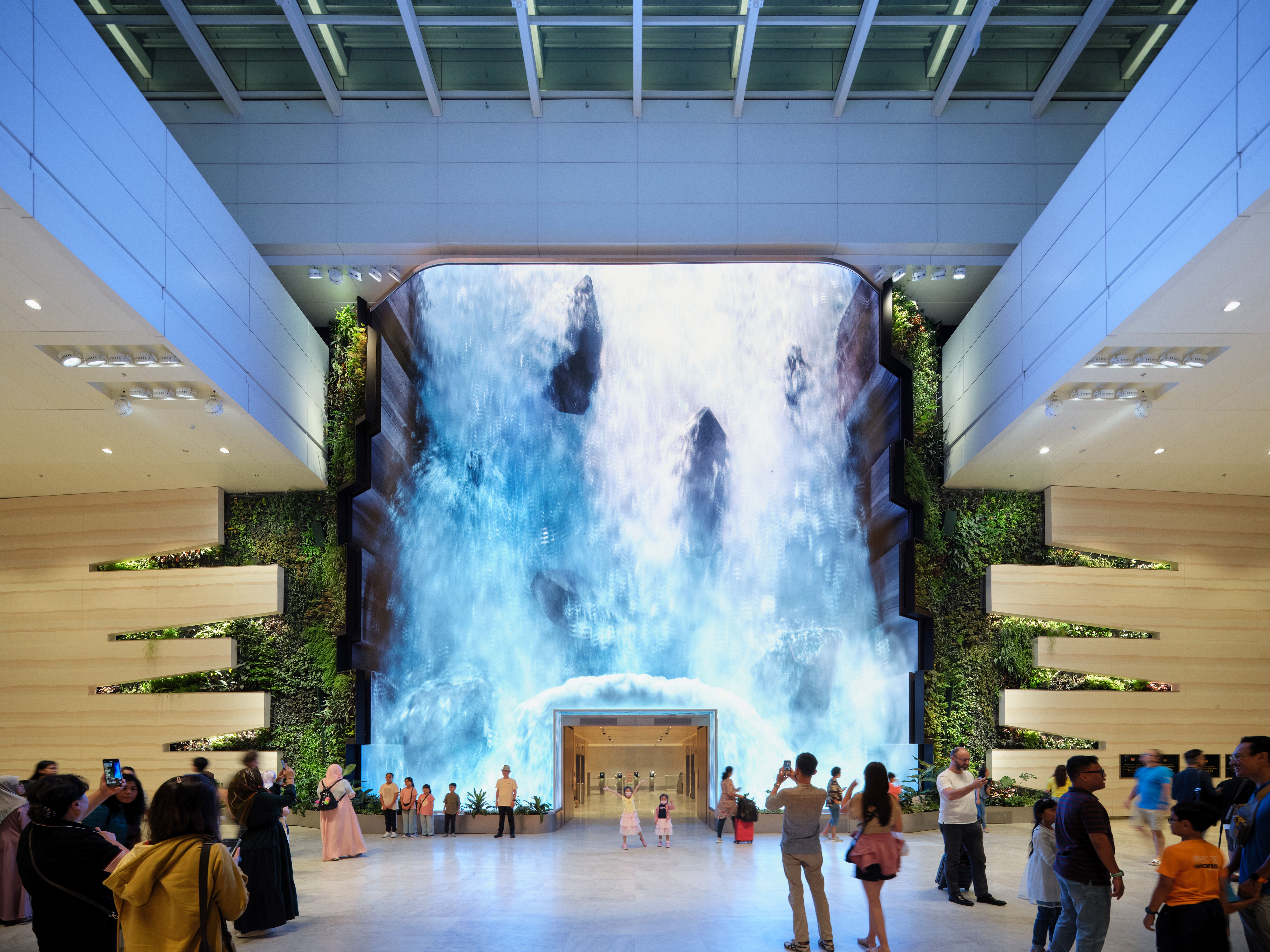
Green columns scale the atriums throughout, supporting an open floor plan. With an unobstructed view spanning the immigration zone, baggage collection, and ‘meet and greet’ area, this flow allows for a seamless feel and overall efficiency, encouraging travellers to understand the space and take moments of pause before moving forward with their journey.








